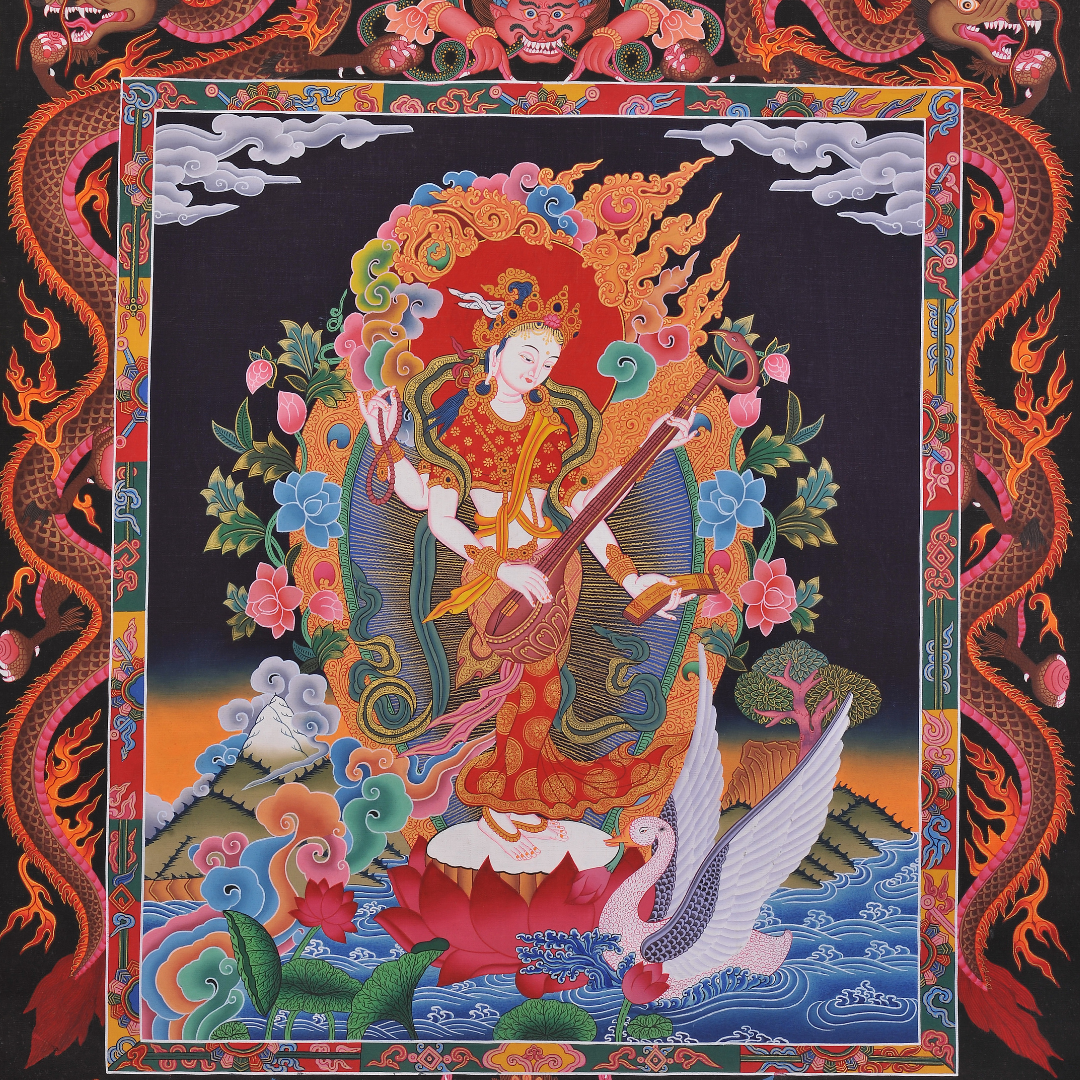SUMMER SPECIAL 25% OFF at Checkout
Standing White Tara Thangka
Standing White Tara Thangka
Precio habitual
$695.00 USD
Precio habitual
$874.00 USD
Precio de oferta
$695.00 USD
Precio unitario
/
por
Los gastos de envío se calculan en la pantalla de pago.
No se pudo cargar la disponibilidad de retiro
Handpainted Standing White Tara Thangka.
The Thangka of the White Tara, also called "the Mother of all Buddhas" is the perfect embodiment of graceful power, wisdom, and purity. As with Tara expressions in the other five colors, the vibrations of white color expresses the specific energy of White Tara. Pure, truthful, powerful, transcending all limitations - these are just some of the attributes of color white that describe the energy of White Tara. Sometimes the White Tara is called "the Goddess of Seven Eyes" because, in addition to the third eye, she is also depicted with eyes in her hands and feet. This represents White Tara seeing all human suffering, as well as encourages the devotee to develop vigilance and sensitivity to the energy in and around them.
White Tara is seen standing on a lotus throne. Her body is white and she is seated in the Vajra posture. Her left hand, which is placed on her heart, holds the stem of a blossoming lotus beside her left shoulder. Her right hand is in Varadamudra, Symbolising supreme generosity. She is wearing all six ornament.
In this beautiful Thangka painting, we can see the two Bodhisattvas on the bottom part of the painting and the exquisite scenery in the background adds up to White Tara’s beauty. In the middle part of the bottom register lies the offering substance along with auspicious symbols.
The practice of White Tara is basically performed in order to attain prolonged life as well as for healing purpose. It is said that because Arya Tara is the collective manifestation of the enlightened activity of all Buddhas, her Sadhana is easily accomplished. Reciting her mantra merely a thousand times brings good luck and causes aversion of hindrances.
The Thangka of the White Tara, also called "the Mother of all Buddhas" is the perfect embodiment of graceful power, wisdom, and purity. As with Tara expressions in the other five colors, the vibrations of white color expresses the specific energy of White Tara. Pure, truthful, powerful, transcending all limitations - these are just some of the attributes of color white that describe the energy of White Tara. Sometimes the White Tara is called "the Goddess of Seven Eyes" because, in addition to the third eye, she is also depicted with eyes in her hands and feet. This represents White Tara seeing all human suffering, as well as encourages the devotee to develop vigilance and sensitivity to the energy in and around them.
White Tara is seen standing on a lotus throne. Her body is white and she is seated in the Vajra posture. Her left hand, which is placed on her heart, holds the stem of a blossoming lotus beside her left shoulder. Her right hand is in Varadamudra, Symbolising supreme generosity. She is wearing all six ornament.
In this beautiful Thangka painting, we can see the two Bodhisattvas on the bottom part of the painting and the exquisite scenery in the background adds up to White Tara’s beauty. In the middle part of the bottom register lies the offering substance along with auspicious symbols.
The practice of White Tara is basically performed in order to attain prolonged life as well as for healing purpose. It is said that because Arya Tara is the collective manifestation of the enlightened activity of all Buddhas, her Sadhana is easily accomplished. Reciting her mantra merely a thousand times brings good luck and causes aversion of hindrances.
Share




